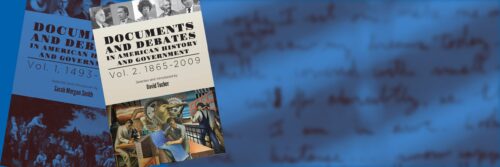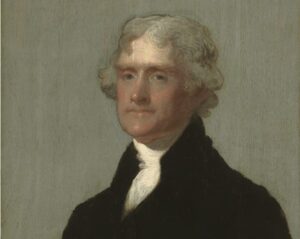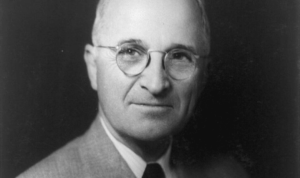
On Horse-racing, Bank Runs, and Economic Collapse: What Caused the Great Depression
My favorite movie is Seabiscuit, the story of one broken horse and two broken men who, in the process of fixing one another, inspired a nation. I used the film in my APUSH classes as a metaphor for how the United States, broken by economic collapse during the Great Depression, saw the election of Franklin Roosevelt as a chance to pick up the pieces and rebuild itself. Director Gary Ross brilliantly weaves the fictional depiction of Seabiscuit’s rise to fame with narration from popular historian David McCulloch, a combination that lends the film authenticity.
When using the film in class, I paused on specific scenes to take advantage of Ross’s Hollywood skills and McCulloch’s narration. One teachable scene is set in 1929. Charles Howard (played by Jeff Bridges), who later becomes Seabiscuit’s owner, is a successful automobile dealer hosting a posh dinner in his California home. Howard’s phone begins to ring, a bundle of newspapers tied in twine, displaying a banner headline “CRASH!” drops with a thud and McCulloch’s sonorous voice takes charge, announcing, “There were no suicides on Wall Street that day. It was a myth that would grow over time.” McCulloch’s narration continues, documenting the very real loss of market value caused by the October 29 Stock Market collapse, the loss of jobs, and the forced migration of millions of Americans seeking employment.
Another myth about the Great Depression is that the Stock Market Crash caused it. The reality is far more complicated. In a MAHG class on the American economy, I learned that if the Great Depression had a single cause, the more likely culprit was the banking collapse in the 1930s. This knowledge convinced me to use a scene from another Hollywood film set during the Great Depression to teach my students about bank runs.
This one is the Christmas classic, It’s A Wonderful Life. Jimmy Stewart plays George Bailey, a small-town savings and loan manager desperately trying to stop a run on his institution. To calm his anxious borrowers, he tries to explain how home-owner loans work:, “The money isn’t here. It’s in Joe’s house … and the Kennedy house … and a hundred other places. You’re lending them the money to build, and they will pay you back over time.” Panic reigns, however, and George is forced to buy a little time by giving his customers cash from his own pocket.
George Bailey’s neighbors are not alone in having trouble grasping the inner workings of the economy or the intricacies of banking. Many Americans have the same problem. Even the “experts” frequently disagree on the policies best designed to boost the economy. Economic historians, likewise, debate the causes of the Great Depression. They also debate whether President Hoover’s response to the crisis exacerbated the situation, and whether FDR’s New Deal ended the depression. In the presidential campaign of 1932, Republican incumbentHerbert Hoover and Democratic nominee Franklin Roosevelt engaged in a vigorous debate about how best to reverse the economic downturn, foreshadowing this ongoing academic discussion.
The documents in Chapter 21: What Caused the Great Depression from Volume II of Documents and Debates in American History illustrate the differences between these two candidates for the presidency. In doing so, they set the stage for the continuing debate over the federal government’s proper role in regulating the economy. Should the government adopt specific strategies to minimize the boom and bust cycle? What policies promote economic opportunity and economic equality for the greatest number of people over the long run? Students can compare this debate to current political debates over economic policy and see that the questions raised by the events of the 1930s remain highly relevant today.
Documents in this chapter include:
- Herbert Hoover, “Principles and Ideals of United States Government,” October 22, 1928
- Representative Jacob Milligan (D-MO), Speech on the Smoot-Hawley Tariff, July 3, 1930
- Franklin D. Roosevelt, “The Forgotten Man,” April 7, 1932
- Franklin D. Roosevelt, Acceptance Speech at the Democratic Convention, July 2, 1932
- Franklin D. Roosevelt, Commonwealth Club Address, September 23, 1932
- President Herbert Hoover to Senator Simeon Fess (R-OH), February 21, 1933
We have also provided audio recordings of the chapter’s Introduction, Documents, and Study Questions. These recordings support literacy development for struggling readers and the comprehension of challenging text for all students.
Teaching American History’s We the Teachers blog will feature Documents and Debates with their accompanying audio recordings each month until recordings of all 29 chapters are complete. In today’s post, we feature Volume II, Chapter 21: What Caused the Great Depression. On December 8, we will highlight Volume I, Chapter 7: The Debate over Ratification. We invite you to follow this blog closely so you will be able to take advantage of this new feature as the recordings become available.



